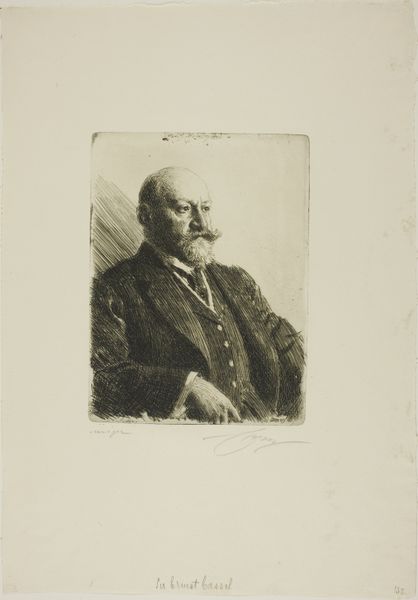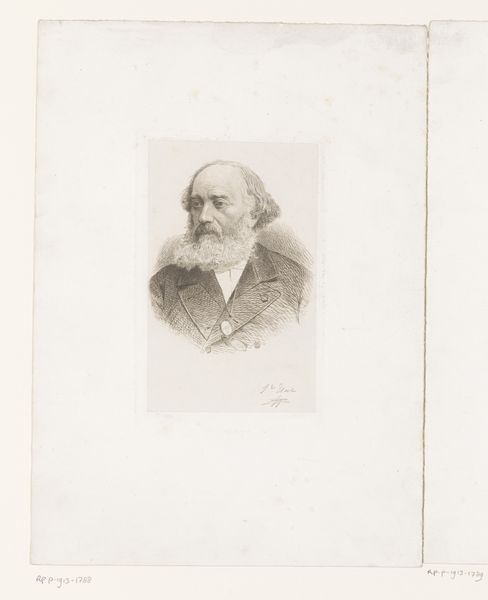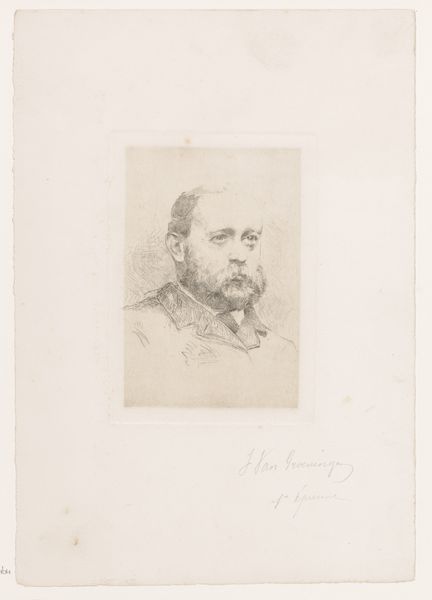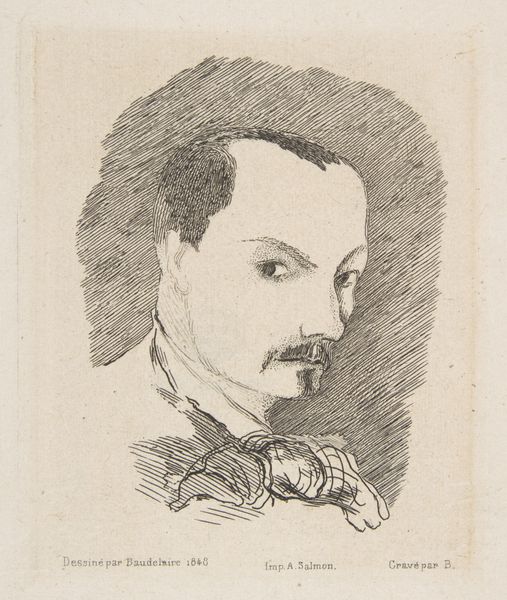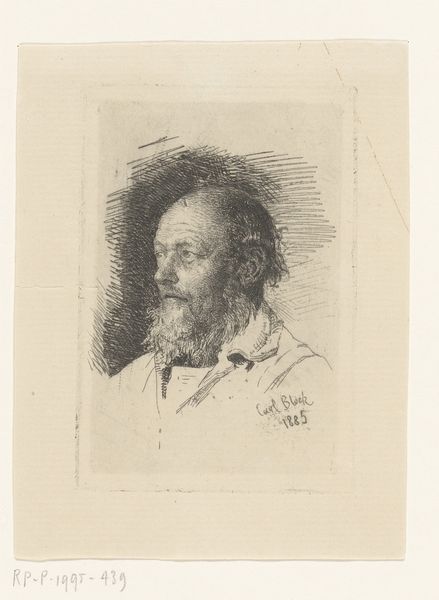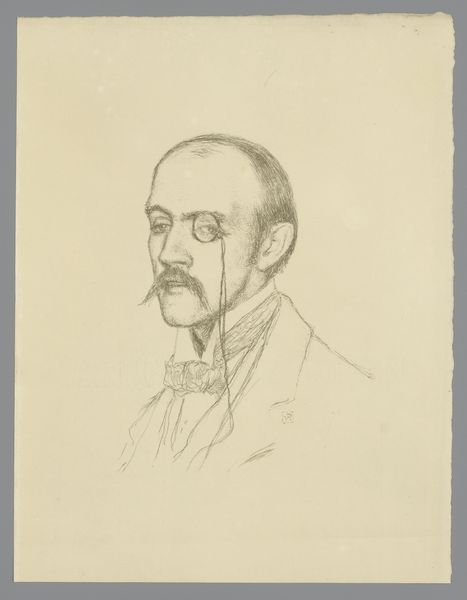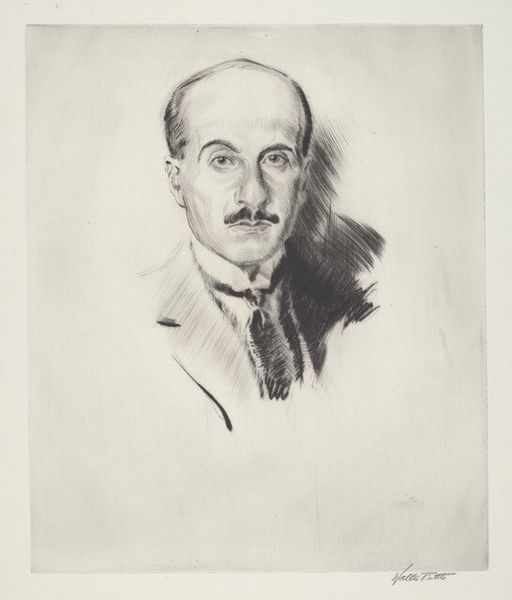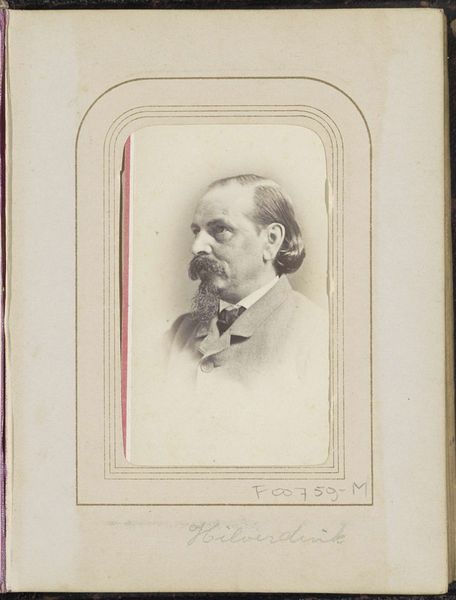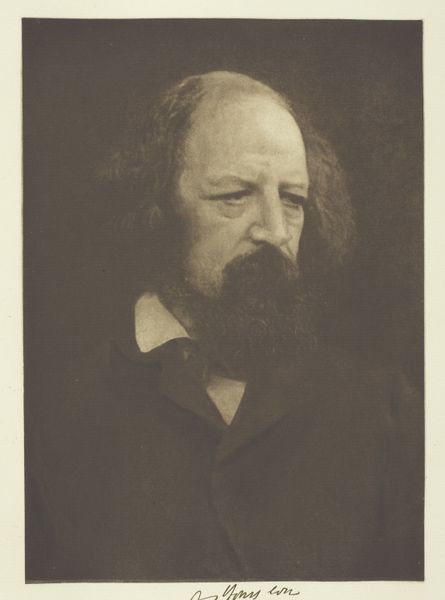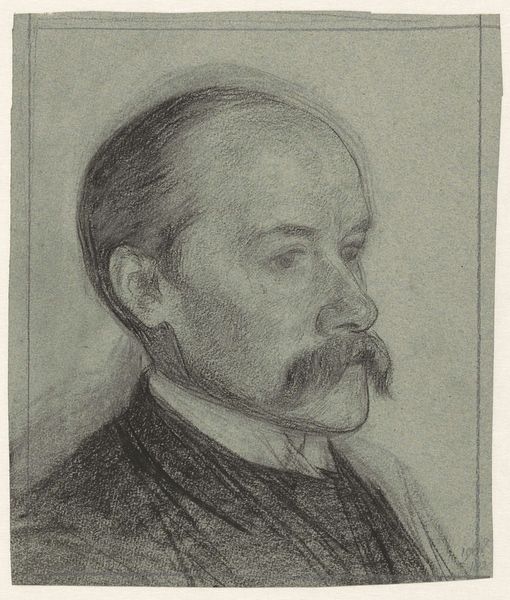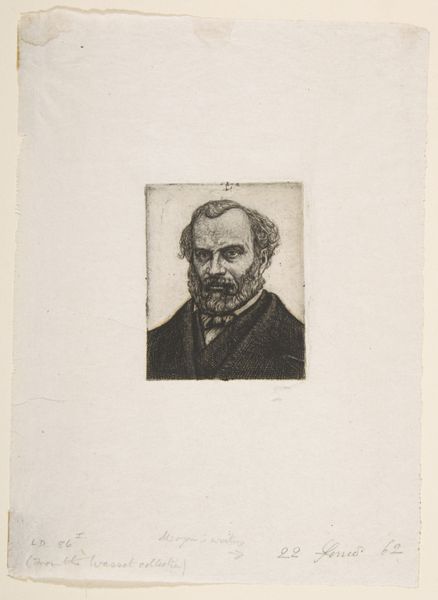
drawing, print, etching, intaglio, paper, engraving
#
portrait
#
drawing
#
self-portrait
# print
#
etching
#
intaglio
#
paper
#
engraving
Dimensions: 69 × 51 mm (image/plate); 85 × 64 mm (sheet)
Copyright: Public Domain
Editor: This is Donald Shaw MacLaughlan's "Portrait of the Artist," created in 1902. It’s an etching, giving it a sort of raw, almost hesitant feel. I find myself wondering about the circumstances surrounding its creation. What does this self-portrait tell us about MacLaughlan, especially considering the artistic and social climate of the early 20th century? Curator: It's interesting to consider this work in the context of the burgeoning etching revival of the late 19th and early 20th centuries. Artists turned to printmaking for several reasons. How might this intimate self-portrait reflect MacLaughlan's position within that movement, perhaps engaging with questions of artistic identity and the role of the artist in society? Editor: I guess he's staking his claim in a visual way. But why choose printmaking specifically? Curator: Printmaking offered artists a means of democratizing art. It made art more accessible to the middle class and facilitated a wider dissemination of their ideas and aesthetics. How do you think a self-portrait in print differs from a painting? Could the medium itself become a statement about artistic intention and accessibility? Editor: I hadn't thought of it that way. Painting can seem… exclusive. A print feels more like it’s meant to be shared, more relatable. Almost like MacLaughlan wanted to present himself as part of a broader artistic community, not just as some isolated genius. Curator: Precisely. Furthermore, think about the burgeoning art market and the roles galleries and critics were assuming. Creating self-portraits—and distributing them—may have allowed artists some control over their public image. Is it fair to say this is a powerful form of agency for the artist? Editor: Absolutely. I am re-thinking how I see self-portraits. They're not just about the individual artist; they're connected to larger historical forces. Curator: Exactly. Hopefully this conversation illuminates the role cultural context plays when we are examining artwork.
Comments
No comments
Be the first to comment and join the conversation on the ultimate creative platform.
